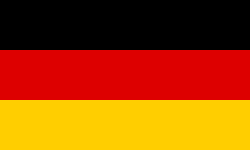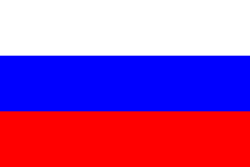In today's competitive landscape, simply acquiring robots or software isn't enough. The era of isolated automation is creating costly inefficiencies, communication gaps, and operational friction. The future of productivity lies not in individual components, but in a holistic, intelligent network where every element—from AI-driven decisions to physical actions—is perfectly synchronized. This analysis will deconstruct the profound strategic value of the Robot Industries Ecosystem, a human-centric, fully integrated solution designed to move beyond fragmented processes and unlock truly unified, intelligent automation. We will explore how this ecosystem functions as a single entity and project the tangible performance gains achievable through this next-generation approach.
The High Cost of Disconnected Automation
Many organizations invest heavily in automation, acquiring best-in-class solutions for specific tasks. A state-of-the-art CNC machine here, an advanced CRM there, and a fleet of autonomous mobile robots for transport. On paper, each component is a model of efficiency. In reality, they often create 'islands of automation'—powerful but isolated systems unable to communicate or coordinate effectively. This fragmentation leads to critical bottlenecks. A robotic palletizer may sit idle waiting for goods from a production line that isn't synchronized with its schedule. A digital workflow in the ERP may not automatically trigger a physical action in the warehouse. The result is a system that is far less than the sum of its parts, where human operators are left to manually bridge the gaps, leading to errors, delays, and unrealized ROI.
A Unified Solution: The Robot Industries Ecosystem
Robot Industries was founded on the principle that true efficiency requires a single, intelligent, and cohesive system. Our ecosystem is not a collection of products; it is a centrally coordinated network designed from the ground up to think, act, and learn as one. This is achieved by integrating two core layers:
The Brains: RiA - The AI Coordination Layer
At the heart of the ecosystem is RiA, a powerful network of AI agents. RiA serves as the central nervous system, responsible for thinking, strategic planning, and operational optimization. It interfaces with your existing digital tools (ERP, CRM, WMS) to understand high-level business goals and translates them into perfectly sequenced tasks for the physical hardware. RiA manages workflows, allocates resources in real-time, and anticipates needs before they become bottlenecks.
The Brawn: A Fleet of Specialized, Interconnected Robots
The physical manifestation of RiA's intelligence is our comprehensive range of specialized robots. Each is designed for seamless integration and flawless execution of tasks assigned by the AI core. Our active components include:
- Welding Robots: For collaborative, automated, and safe high-precision welding.
- Palletizing Robots: For intelligent loading and unloading in warehouse and production environments.
- Logistic Robots: For autonomous and optimized material transport across facilities.
- Cleaning Robots (CleanX): For industrial-grade, scheduled, and on-demand cleaning.
- Smart Services Robots: For customer interaction, guidance, and support in commercial and HoReCa settings.
- CNC Laser: For high-precision, automated material cutting and processing.
Together, these components form a complete ecosystem that eliminates the friction between digital intent and physical action.
Strategic Analysis: The Ecosystem in Action
Consider a hypothetical mid-sized manufacturing facility, 'FutureFab Inc.' Their challenge is common: inconsistent production flow and high error rates in order fulfillment. Their CNC machine, palletizer, and manual logistics are disconnected.
By implementing the Robot Industries Ecosystem, RiA integrates with FutureFab's ERP system. It analyzes an incoming order and orchestrates the entire workflow. The CNC Laser is tasked with cutting components, while RiA simultaneously dispatches a Logistic Robot to be ready for pickup the moment the job is done. The parts are transported to an assembly station where Welding Robots perform their work. Finally, a Palletizing Robot, already informed by RiA of the final product dimensions and shipping destination, stacks the goods for dispatch. The entire process is fluid and continuous.
Illustrative Projections:
- Throughput Increase: By eliminating idle time between stations, we project a 35% increase in overall plant throughput.
- Error Reduction: With RiA managing order fulfillment from start to finish, palletizing and shipping errors are projected to fall by 99.8%.
- Operational Agility: When a high-priority order arrives, RiA can re-task all relevant robots in real-time to meet the new demand without manual intervention, a task that would have previously caused hours of disruption.
The Next Frontier: The Humanoid as the Ultimate Interface
The evolution of our ecosystem culminates in the Humanoid. This is not just another robot; it is the physical embodiment of the RiA network, designed to be the ultimate interface between humans and technology. Combining advanced mobility and dexterity with the full cognitive power of RiA, the Humanoid can perform complex physical tasks, interact using natural language, and collaborate with human teams in factories, clinics, and offices. It makes the power of the entire ecosystem accessible, approachable, and interactive on a human level.
Conclusion: Build an Ecosystem, Not Islands
The path to next-generation productivity is not paved with more disconnected tools. It is built on a foundation of unified intelligence. The Robot Industries Ecosystem offers a decisive strategic advantage by replacing fragmentation with fluidity, and manual coordination with AI-driven orchestration. It is a future-focused, human-centric solution that delivers quantifiable results today while paving the way for even deeper human-machine collaboration tomorrow.
Stop building islands of automation. It's time to build an intelligent ecosystem. Contact Robot Industries to discover how a unified approach can transform your operations.











Beyond Silos: How the Robot Industries Ecosystem Creates Unified Intelligent Automation